Album Weeds – Cuba
 1855. 2 Reales, crimson.
1855. 2 Reales, crimson.
Genuine
Engraved in épargne, on greenish-blue wove paper; watermarked very distinctly with loops at the top and bottom. The circle round the queen’s head contains seventy-three pearls; and this will have to be particularly noted, as being the chief test of the genuine. The pearls are all the same size, and the same distance apart. The netted, or fish-scale groundwork comes close up to the white circle, all round the top of the stamp; but there is a gap between the network and the circle in the bottom half of the stamp, from the left-hand side to about level with the sharp peak at the base of the bust. The C of CORREOS has the same sort of end, both at top and bottom of the letter; and it is as far from the left-hand end of the top label as the S at the end of the word is from the right-hand end of the label. The head of the figure 2, at the bottom of the stamp, is not simply bent over into a plain hook, but is curled inwards into a spiral. The said figure is at a good distance from the border of the label, and the stop after it does not anything like touch it. The little S of Rs is perfectly upright. The stop after the F is on the same level with the stop under the S of Rs; and both are higher than the stop after the 2. The side-borders of the stamp are composed of little florets (almost in the shape of horse-shoes) and of little dots, placed alternately; and the topmost dot in the left-hand side of the frame is exactly above the center of the little floret below it.
First Forgery
Except for the lack of watermark, this forgery is exceedingly deceptive. Lithographed, on soft, bluish-green wove paper, smoother than the genuine; no watermark. The circle round the queen’s head contains seventy-eight pearls; and those above the chignon and the top of the head are smaller than the rest, and farther apart. The netted ground-work comes tolerably close to the white circle all the way round; and there is no distinct gap between the network and the circle, in the bottom half. The head of the C of CORREOS is larger and more distinct than the tail; and it is nearer to the left-hand end of the border than the S of the same word is to the right-hand border, though the difference is not very great. The head of the figure 2 is a plain hook, not curled in upon itself. The 2 is as close to the left-hand end of the label containing it as it can be without absolutely touching it; the stop after the 2 almost touches the tail of the 2. The S of Rs slants over very distinctly to the right. The stop after the F is on the same level as the stop after the 2, and a good deal lower than the stop after the S of Rs. The dot above the highest floret or horse-shoe, in the left-hand side of the frame, is not exactly above the center of the floret, but far too much to the right of the center.
Second Forgery
Very poorly lithographed, on greenish-blue wove paper, rather thick and hard, but not of such a decided tint as that of the first forgery. The impression is particularly greasy-looking, and the face of the paper very shiny. There are seventy-three pearls round the central circle, as in the genuine; but they are of “various shapes and sizes, some being very small. The white circle round the pearls is broken in so many places that it looks (particularly on the left side) as though intended for a dotted line, instead of a continuous one. The network has gaps in it at the top, as well as at the bottom. There is no stop after the 2, and the said 2 is at a good distance from the left-hand end of the containing-label. The circular floret or ornament in the left lower corner is almost invisible, so that, at first sight, the little square containing it appears to be solid. The topmost dot on the left side is directly above the first horse-shoe- shaped floret, as in the genuine; but the floret itself is malformed, and seems to be twisted to the right. According to the description just given, this forgery has more points of resemblance with the genuine than the first forgery has; but, as a matter of fact, the execution is so very poor, that, despite the points of resemblance, this counterfeit is not likely to deceive.
Postmarks
Genuine.—These stamps were used in the Philippine Islands, as well as in Cuba, Porto Rico, .etc.; and the postmark on those from the former place is 77. Those used in Cuba seem to have been usually cancelled with a large postmark of small, diamond-shaped dots.
Forged.—The forgeries bear 98, also 5, without numerals.


 1857. 1/2, 1 & 2 Reales.
1857. 1/2, 1 & 2 Reales.
Genuine
Printed, on white wove paper, varying as above described; no watermark. The design is exactly the same as that of the first issue, including the seventy-three pearls round the central circle, the gap between the lower part of the circle, and the netted background, etc.; so that the description of the first issue will serve for this one. In the 1/2 real, the slanting line, dividing the fraction, is very much sloped, and points upwards towards the very center of the queen’s head, and the dot under the little L is high up. In the 1 real, the stop after the R is no larger than that after the F; and the F itself is at the same distance from the right-hand end of the label containing it as the 1 is from the left-hand end of the label. The 2 Reales is exactly the same as the genuine one, already described, of the 1855 issue.
Forged
Lithographed, on smooth, white wove paper; no watermark. The design is exactly the same as that of the forged 2 reales of the 1855 issue, described above; having the seventy-eight pearls, no particular gap between the lower half of the central circle and the netted background under it, etc. In the I real, the slanting line, dividing the fraction, is not much sloped, and only points upwards towards the chignon, at the back of the queen’s head. The dot under the little L, in this value, is low down, level with the bottom of the R, immediately preceding it. In the 1 real, the stop after the 1 is very much larger than the one under the L, or the one after the F; and the F itself is closer to the right-hand end of the label than the 1 is to the left-hand end of it. The 2 Reales is exactly the same as the forged 2 Reales of the 1855 issue, already described; except, of course, that both genuine and forged 2 Reales of this issue are printed in pink on white, instead of crimson on bluish-green.
Postmarks
Genuine.—All my obliterated genuine specimens bear a heavy oval blotch; design totally undecipherable.
Forged.—The forgeries are cancelled with 80, and 98.
The stamps found cancelled with a thick black bar are remainders, sold to dealers and amateurs by the Government, when the issues became obsolete.
 1862. 1/4 Real, black.
1862. 1/4 Real, black.
Genuine
Engraved in épargne, in black, on thinnish, tinted wove paper; no watermark. There are forty-three small, regular pearls down the right-hand border of the stamp, forty-four down the left-hand side, thirty-six across the top, and thirty-six across the bottom, counting the corner ones in, in all four cases. Each of these little pearls has a very small curved line, or dot, in its center. The ends of the scroll containing CORREOS do not touch either the border of the stamp or the central circle. There is a very distinct line down the shank of the anchor, in the right-hand lower corner of the stamp, and a similar line down the stem of the caduceus, or winged rod, in the left-hand lower corner. There are at least sixty-five horizontal lines of shading in the background, outside the central circle; but they are very difficult to count, being so close together. The ornamental border to this central circle has within it a dotted line and an unbroken line, running all round; but the dotted line is the outside one in the upper and lower quarters on the left-hand side, and the unbroken line is the outside one in the upper and lower quarters on the right-hand side. The groundwork behind the queen’s head is perfectly solid, and not blotched.
Forged
Badly lithographed, in blue, on pink wove paper, rather hard; also in black, on thick, hard, bright yellow wove paper. There are only twenty-nine pearls on the right-hand side of the stamp, twenty-seven down the left-hand side, twenty-seven at the top, and thirty-one at the bottom, of different sizes; some of them being oval instead of round, and having, in many cases, the little line of shading straight instead of curved. The outer, left-hand end of the scroll containing the word CORREOS almost touches the border of the stamp, and the inner, right-hand end touches the outline of the central circle. The shanks of the anchor and caduceus are plain, without any line down their centers. The lines of shading in the background, outside the central circle, are very coarse, far apart, and only fifty-three in number; they are easier to count than the genuine. The ornamental border to this central circle has two lines all round it, as in the genuine; but the dotted one is the outside one, and the unbroken line is the inside one all the way round. The groundwork behind the queen’s head is very blotchy, and hardly appears to be solid.
Postmarks
Genuine.—I have never seen a cancelled specimen.
Forged.—22; also a large circle, containing CORREOS and some unreadable letters and numerals.
Bogus Stamps
(Same type as the 1/4 Real of 1862.) 1 Real, green on salmon; 1 Real, blue on bright salmon; 2 Reales, red on magenta.
The forgers were apparently desirous of filling up an evident blank, and have provided us with the above set of bogus stamps, uniform with the forged 1/4 real last described. As no such stamps were ever issued, I need say no more about the bogus ones, beyond remarking that they are cancelled, sometimes with one, and sometimes with the other, of the two postmarks of the forged 1/4 real.



 1864. 1/4, 1/2, 1 & 2 Reales.
1864. 1/4, 1/2, 1 & 2 Reales.
These stamps are exactly the same type as the accompanying illustration, except that they bear the value expressed in Reales, and are not dated. The forgeries are exceedingly well done, though there is, fortunately, one little matter in which they fail, which, once known, renders them very easy of detection, otherwise they would be decidedly dangerous.
Genuine
Engraved in épargne, on moderately thick wove paper, usually tinted; no watermark. The ornaments in the scroll down each side of the stamp consist of zig-zag lines, with a little pearl on a stalk between every two of the zig-zags; these pearls point, alternately, to the outside and the inside of the stamp. The thing to be remembered is, that none of these pearls touch the outlines of the containing-scroll anywhere. The zig-zags are acutely pointed, and just touch the outlines of the scroll. In each corner of the scroll there is a star, with four of the little stalked pearls radiating from each star; and none of these pearls touch the circular outline outside them. The upper ray of the star in the left-hand top corner points directly upwards. The stop before CORREOS is nearer to the end of the label than to the C, and the stop after that word is slightly nearer to the S than to the end of the label. The pearls and jewels on the coronet are very distinct, and the chain-pattern round the head is very regular, and quite plain. The fine, inner line of the lower scroll, below the words and figures of value, runs the whole way, from end to end of the scroll.
First Forgery
Lithographed, much better than usual, on wove paper, of various qualities; thin white, thin tinted, thick tinted, and very thick salmon-colored. All the little stalked pearls which point inwards touch the inner boundary-line of the scroll containing them; and most of those which point outwards touch the boundary-line, but not all of them. Several of the zig-zags are rather blunt, though many of them are like the genuine. One, at least, of the four pearls, radiating’ from each of the stars in the corners, touches the circular border round it. The upper ray of the star in the left top corner slants slightly to the right, instead of pointing directly upwards. The stop before CORREOS is nearer to the c than to the end of the label; and the stop after that word is a good deal nearer to the S than to the end of the label. The pearls and jewels on the coronet are not very clear; and, in most copies, the chain-pattern round the head is blotchy. The fine, inner line, below the words and figures of value, is broken and irregular in the 2 Reales; and, in the lower values, the said line is altogether absent, except a very small portion, just at the left-hand end of the label. I must call particular attention to the 1/4 real of this set, as being much above the average, and likely to deceive.
Second Forgery
Lithographed, on rather stout, very white, and also on salmon-colored porous and fine-grained wove paper. It is not nearly so good a forgery as the one just dissected, and I do not remember seeing it before 1890. Most of the little stalked pearls touch either the outer or inner boundary- line of the containing-scroll; and most of the stalks to the pearls are drawn crookedly, and join the side of their respective zig-zags, instead of running into the very point. Nearly all the zig-zags are very blunt, and look as though their points had been cut off by the boundary-line. The stop after CORREOS almost touches the end line of the containing-label. The lower lettering is badly drawn, uneven and ragged. The little chain-pattern round the central oval is so badly done in this counterfeit, that it looks like a ragged, uneven, irregular white line, with little dark dots along it. This is an easy test. Other tests may be found by comparing the above with the description of the genuine; but those which I have given will probably prove sufficient for the detection of this forgery.
Postmarks
Genuine.—Generally 77, as in the earlier ones described above.
Forged.—The first forgery has the gridiron, 22, like the forged J real of 1862. The second forgery is cancelled with four concentric circles, with a blotch in the middle.
 1866. Provisional. 1/4 Real, black on buff. Surcharged “66.”
1866. Provisional. 1/4 Real, black on buff. Surcharged “66.”
Genuine
This is the 1/4 real of 1864, with the date “66” printed across the face of the stamp, in large figures. The tests are exactly the same as for the genuine stamps of the 1864 issue.
Forged
Lithographed, on stout, buff wove paper, rather hard. This is the same type as the second forgery of 1864, with the surcharge “66” added. The tests, therefore, are exactly the same as those for the second forgery of 1864.
Postmarks
Genuine.—I fancy the genuine stamp is scarce, used; at any rate, I have never come across a cancelled copy.
Forged.—The forgery now before me is postmarked with a scarlet blotch, which looks like part of an oval; but it is struck just in one corner of the stamp, so that I am not able to say what it really is.
I think this forgery was made somewhere about 1885.



 1866. 5, 10, 20 & 40 Centimos.
1866. 5, 10, 20 & 40 Centimos.
Genuine
Engraved in épargne, on very thin, white wove paper. The type, except for the alteration of the monetary denomination, and the addition of the date, is exactly the same as that of the issue of 1864; and all the tests are the same as for the genuine stamps of that issue. All my copies are printed on much thinner paper than that of 1864.
First Forgery
Badly lithographed, on thinnish, white wove paper. These counterfeits are exactly like the first forgery of 1864, except for the alteration in the value, and the addition of the date. All the tests for the said forgery will hold good for the set under consideration; and, in addition, I may mention that this set is not nearly so well printed, and is thus not so likely to deceive. However, a carefully-printed copy would have a very good appearance; but the stamps which I have seen of this set have always been more or less smudged.
Second Forgery
Exactly the same as the second forgery of 1864, but with date, and altered value. Some copies are perforated 12. The genuine stamps are not perforated.
Postmarks
Genuine.—All my used genuine stamps bear some very faint and totally undecipherable blotches.
First Forgery.—62.
Second Forgery.—This is cancelled with four concentric circles, with a blotch in the middle ; also with 54, with blank centre.



 1867. 5, 10, 20 & 40 Centimos.
1867. 5, 10, 20 & 40 Centimos.
Genuine
Exactly the same as the 1866 issue, but with altered date, and perforated 14.
First Forgery
Exactly the same as the first forgery of 1866, but with altered date, and perforated 13 (the forgers’ usual gauge), fairly well.
Second Forgery
I have not seen this, but it is sure to exist; and the tests will be the same as those for the second forgery of 1866, with altered date.



 1868. 5, 10, 20 & 40 Centimos.
1868. 5, 10, 20 & 40 Centimos.
Genuine
Engraved in épargne, on rather thin, soft, white wove paper, perforated 14. The queen has a blunt, turn-up nose. The top line of the eye-brow does not run into the hair. There are three clear lines of shading in the central circle, below the lowest point of the neck. This central circle is surrounded by two dark lines, the inner one exceedingly thin, and the outer one quite ten times as thick. There is a distinct stop after 1868. The letters in the corners are, respectively, C, O, R, R. They are all of equal size, and perfectly distinct. The floreated ornaments in the spandrels are all exactly alike. The jewels on the base of the coronet are in the following order: diamond, pearl, diamond, pearl, diamond.
Forged
Lithographed, on very white wove paper, rather stout, and perforated 13, in oval holes. The queen’s nose is very sharp, hooked, and does not turn up. The top line of the eye-brow joins the front outline of the hair. There are five clear lines of shading in the central circle, below the lowest part of the base of the neck. The inner one of the two lines surrounding the central circle is much too thick, being more than half as thick as the outer line. There is no stop after 1868. The letters in the top corners are much smaller than those in the lower corners. The R in the left lower corner looks like an H, and the R in the right lower corner is evidently a K. Some of the fine lines of the floreated spandrels are wanting, in one or more of the corners. The jewels on the band at the base of the coronet are blotchy, and they are, respectively, diamond, pearl, diamond, pearl, diamond, pearl. The colors of this set are far brighter than those of the genuine, which are decidedly dingy.
Postmarks
Genuine.—77; also two large concentric ovals, with an undecipherable pattern in the center.
Forged.—22; also 6, with blank center.
1869. 5, 10, 20 & 40 Centimos.
Genuine
Engraved in épargne, on rather thin, soft, white wove paper, perforated 14. The design is almost exactly the same as that of the 1868 issue, and the tests are the same.
Forged
Exactly the same as the forgeries of the 1868 issue; tests the same. I do not think that either of these two sets of counterfeits is likely to deceive. They are, I fancy, only a few years old.


 1870. 5, 10, 20 & 40 Centimos.
1870. 5, 10, 20 & 40 Centimos.
The forgeries of this set are not equal to some of those described above; for, though the design is ‘ tolerably well copied, the appearance of these counterfeits is poor, and they all have a sort of washed-out look, very different from the originals.
Genuine
Engraved in épargne, on thin, soft, white wove paper; perforated 14. The bottom of the chin of the figure is darkly shaded, and there are horizontal lines of shading down both sides of the neck, leaving a white space down the centre of the neck. Just below the bottom of the neck, in the solid groundwork, are the two letters E. J., in very small, white capitals, but plainly visible. The crown is very distinct, and four colored dots can be seen along the top of each of the turrets on the crown. The right side of the face (i.e., on the left side of the stamp) is shaded, from the side of the forehead down to the bottom of the chin, with short, but distinct, horizontal lines. The outer border of the stamp is very wavy all round; and eight waves can be seen on each side, and seven at the top and the bottom. The outline of the label containing the value and date is perfect all round. The down-stroke of the 7 in 1870 is thinnest at the top, and gets gradually thicker to the bottom; and the 0 of 1870 is not quite round, though this would hardly be noticed; unless expressly looked for.
Forged
Lithographed, on very thin, white wove paper; pin-perf. 12 1/2, very badly. There is only the merest trace of shading on the bottom of the chin, and the neck is only shaded down the left-hand side, above 1870, all the rest of the neck being white. The letters E. J. (the initials of the engraver, Emilio Julia) are not visible in these forgeries. The crown is very indistinct, even in the most heavily-printed copies; and the tops of the turrets, when visible at all, seem to have only a little blotch on them, instead of the four dots of the genuine. There is a little shading down the right side of the face, but it is indistinct and not regular, and the lines are omitted here and there. The outer border of the stamp is very slightly waved, though there seem to be the same number of waves as in the genuine. The outline of the label containing the value and date is always broken somewhere, and is very faint and undecided. In the date, the down-stroke of the 7 is the same thickness all the way, and the 0 is perfectly round. There is a peculiar white, flat look about the face in these forgeries which condemns them at once; and yet the design has been carefully copied.
Postmarks
Genuine.—The genuine stamps of this issue are usually cancelled with 29. One of my own copies bears, in the outer circle, “DINAS DE CUBA”, and in the center, ” NOV. 70.”
Forged.—The forgeries bear 1, 54 (with blank center), 62, 100.

 1871. 12, 25, 50 c., 1 Peseta.
1871. 12, 25, 50 c., 1 Peseta.
Genuine
Engraved in épargne, on thick, white wove paper; perforated 14. The rampant lion on the shield has four legs, and his tongue is not visible. The hair of the lady, and the wreath round her head, are very plainly drawn, as are also the hand and fingers holding the branch. The right foot is sharply pointed, and the point touches the inner boundary-line of the frame. The wand borne in the left hand is formed by two parallel, colored lines. The cross-bar of each A of the lettering, in all the values, is a good deal lower down than is usually the case in ordinary capital letters. I think the easiest test for the genuine stamps is, that the stop after the D. of C. D. PESETA, in the three lower values, is placed level with the center of the D, as in our illustration, instead of being level with the bottom of the letter, and in the 1 peseta, there is no stop at all, except after the figure 1.
Forged
Lithographed, on thin, poor paper; pin-perf. 13. The rampant lion on the shield hangs his tongue out, and he has been deprived of one of his legs. The hair of the lady, and the wreath round her head, are blotched and indistinct, whilst the hand holding the branch is a mere smudge, and the fingers cannot be counted. The right foot is blunt, not to say stumpy, and it does not touch the inner boundary-line of the frame. The wand in the left hand is, in most copies, merely one thick line instead of two thin ones. The cross-bar of each A in the lettering of all the values is level with the center of the letter, as in an ordinary capital A. The stop after the D of C. D. PESETA, in each of the three lower values, is level with the bottom of the letter, instead of being in the middle of the line; and, in the 1 peseta value, there is a sort of faint hyphen before the I, a very small stop after the 1, and a faint hyphen and a stop after the end of the word PESETA.
Postmarks
Genuine.—These are very various. In my own collection I have one stamp with thick, parallel bars, another with the double circle described with the last set, another with 77, another with blotches, and another with a very peculiar obliteration of diamond-shaped dots, arranged in an oval form, in groups of four, each group forming a larger diamond.
Forged.—The forgeries seem to be always obliterated with 54, with blank center.



 1873. 12 1/2, 25, 50 c., 1 Peseta.
1873. 12 1/2, 25, 50 c., 1 Peseta.
Genuine
Engraved in épargne, on very thin, white wove paper; perforated 14. The king’s right shoulder (i.e., to the left of the stamp) forms a continuation of the shape of the oval of horizontal lines of the background. The end of the mustache which projects upon the shading of the background has two very distinct points, instead of one. The top of the white collar, towards the back of the neck, is formed by two lines. The braiding on the collar of the uniform is worked into what seem to be the letters w.c., after the fashion of a monogram. At the bottom of the central oval, about where a cravat would come, there are the words “E. JULIA”, in very small white letters, almost requiring a microscope to read them. This, as I said before, is the name of the engraver of the stamps. Between the central oval and the line encircling it, there is a white space, which is of equal width all round; and the line itself, encircling the oval, is single under the words ULTRAMAR, ANO 1873, but all the rest of it is formed by short horizontal lines, placed close together. This is very distinct towards the lower part of the oval, where the line gets gradually thicker. None of the letters at the top of the stamp touch the outline of the oval below them. The final R of ULTRAMAR is not cut off at the top by the outline of the frame, but is simply dwarfed, or reduced in size, so as to make it fit into the small space provided for it. The outline of the king’s neck, from the ear to the collar, is not formed by one single vertical line, but by a number of very fine, parallel, and slightly oblique lines. This requires a close inspection.
Forged
Lithographed, on thinnish, white wove paper; unperforated, or pin-perf. 13. The king’s right shoulder, on the left-hand side of the stamp, projects considerably into the white space between the shading and the line round it, so as to cause an interruption in the shape of the central oval. The left-hand end of the mustache, which stands out from the shaded background, appears to have only one point, and is in- distinct. The top edge of the white collar, towards the back of the neck, is formed by a single line only. The central design of the braiding on the collar of the uniform seems to be a sort of figure 3, when it can be made out at all, but it is usually smudged. There are a few white marks at the bottom of the central oval, but “E. JULIA” does not appear. The white space, between the central oral and the line round it, is very much wider on each side than it is at the top and bottom. This is very well marked, and forms an easy test. The line surrounding this central oval is solid all the way round. The T and the final AR of the word ULTRAMAR touch the outline of the oval below them. The final R of this word appears to be a full-sized letter, but with the top cut off by the outline of the frame. The outline of the king’s neck, from the ear to the collar, is formed by a single vertical line. The tilde , or accent, over the N of ANO is, in the genuine stamps, shaped like a very obtuse-angled triangle, but, in these counterfeits, it is represented by a straight horizontal line.
Postmarks
Genuine.—The genuine stamps have either 29, or a large oval, formed of eight very thick parallel bars.
Forged.—The forgeries are ornamented by 62.
 1876. 12 1/2, 25, 50 c., 1 Peseta.
1876. 12 1/2, 25, 50 c., 1 Peseta.
Genuine
Engraved in épargne, on rather thin, hard wove paper, perforated 14. The label at the bottom of the stamp, containing the value, is cut off perfectly square at each end. There is the word CORREOS, in very small white letters, in a little label on each side of the stamp. The hair makes a very slight peak at the back of the head, level with about the center of the forehead, The engraver’s signature is visible, in white letters, on the broad, dark part, towards the back of the base of the neck. This signature appears to be “JIG,” but it is so exceedingly small that I have not been able to decipher it with certainty. The triangular white outlines of the spandrels containing the fleurs-de-lys are not broken in any part. The lions and castles in the four corners of the stamp are quite distinct.
Forged
The only counterfeit which I have seen at present is the 25 Centimos, in black, on green; but if it were in the proper colour, on proper paper, it would certainly be a dangerous forgery, as the design has been very faithfully copied.
Typographed, in black, on thick, dark green laid paper, unperforated. The label containing the value is cut off square on the left-hand side, but somewhat obliquely on the right-hand side, sloping from left to right. There are some marks or letters in the little labels on each side of the frame, but they cannot be deciphered. The back of the head is rounded evenly, without any peak of hair projecting from it. There is no engraver’s signature at the base of the neck. The white outline of each of the triangular spandrels is broken in one or more places. The lions and castles in the corners are very indistinct, and much smudged. When the forgers have corrected their little mistakes, 1 think our youthful friends will have to look out. It will be noticed that this forgery is typographed, so it may possibly be an impression from some electrotype cliche, used for fraudulent purposes, though it is very much more like the genuine than the illustration here given.
Postmarks
Genuine.—Some of my used copies bear 77, and some have an obliteration formed by two large concentric circles, the outer one very thick, and containing letters and figures.
Forged.—-The forgeries are uncancelled.
 1898. 6 Centavos, blue.
1898. 6 Centavos, blue.
Genuine
Engraved in épargne, in a rich ultramarine, on thick, very white wove paper, perf. 14. There is a well-defined, hooked curl on the front of the King’s forehead, the sharp end of it pointing towards the ear. The neck is shaded all over, except a tiny strip of white just on the front of the throat, where the”Adam’s apple” is supposed to be. The Y, in 1898 Y 99, is tall enough to reach up above the center of the 8. The leaf, below the B of CUBA, is dark. There is a little gap cut in the upper edge of the bottom label, just above the hyphen between 6 and CENTAVOS, to allow the point of a leaf to come down; and there is a shallower gap above the C of that word, but the other leaf does not really go into this gap. There is a sort of white comma under the E, the head of it is nicely rounded, and not at all flattened.
Forged
Lithographed, in pale, very milky blue, on medium, rather spongy, yellowish-white wove paper, of a very fibrous nature, badly and irregularly perforated, about 11. The curl on the front of the forehead is a white patch, of no particular shape, and it lacks the sharp, oblique hook of the genuine. The neck is only partly shaded, all the front being white. The Y in 1898 Y 99 is very short, and does not reach up to the height of the middle of the 8. The leaf below the B of CUBA is white, just like the one below the A. There are no gaps in the top outline of the bottom label, and the leaves above the hyphen and the C of CENTAVOS do not touch the outline. The white comma under the E of CENTAVOS is badly shaped, with its head crushed down, or flattened. I can give no more tests, owing to the heavy cancellation of my solitary counterfeit.
From: ‘Album Weeds’, 3rd edition by R. B. Eareé. 1906
![]() See also –> Spud Papers – Cuba
See also –> Spud Papers – Cuba

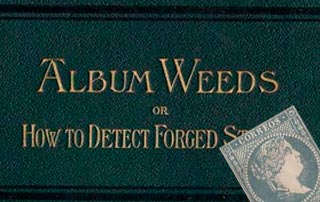
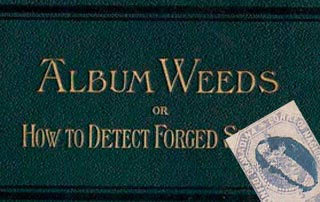
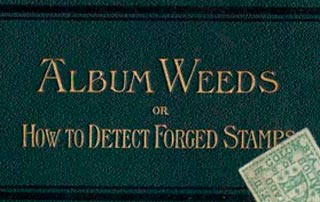


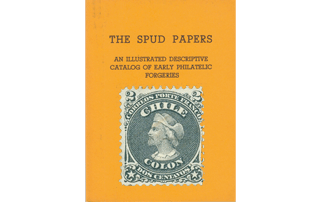
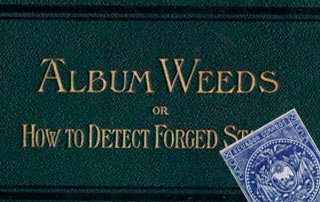

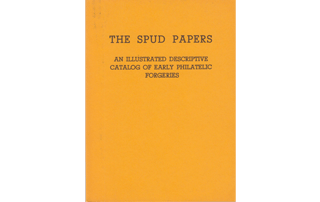
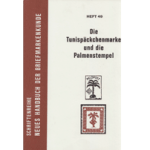
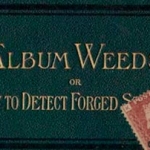
Leave a Reply
Want to join the discussion?Feel free to contribute!